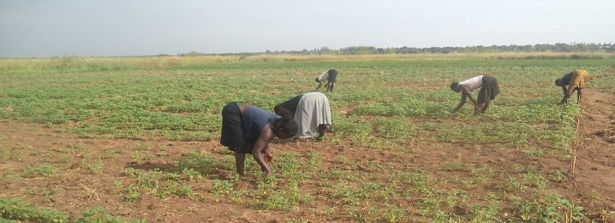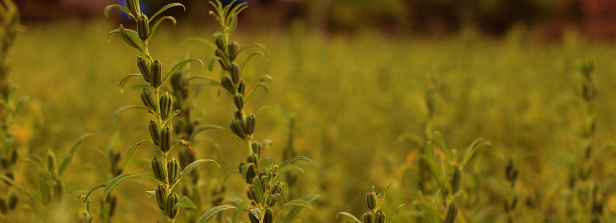Stabilizing sesame productivity in northern Uganda

Duration: January 2015 – January 2018. This project has been finalized.
Project information
Aim: Better exploit the nutritious seeds, quality oils and high export potential of sesame.
Objective: Increase and stabilize productivity, income and food security for smallholder farmers.
Method: Develop and promote technologies adapted to the climate and innovations to rise and stabilise sesame production.
Country: Uganda.
Dutch policy goals: Increased sustainable agricultural production; and Improved access to nutrition.
Progress reports
Year 2: Trials set up to evaluate climate smart innovations to increase and stabilize sesame yields showed that seven lines had lower gall midge damage than the released varieties. Use of insecticides reduced gall midge damage while webworm damage was less in sites where the life cycle of the pest was interrupted by off-season. Trials on varietal reaction and fungicide application in the control of Cercospora leafspot showed differences in incidences by location with some genotypes showing resistance. Fertilizer application tended to enhance sesame grain yields with most limitation by potassium.
These findings indicated a high likelihood to develop climate smart innovations where farmers would plant a resistant variety with an off-season and apply insecticides and fungicides with fertilizer use. For farmers to benefit there is need for appropriate policies on seed, fertilizer and inputs. There is need for on-farm soil testing coupled with advisory services and implementation of the climate change strategy.
Year 3: To stabilize and improve sesame productivity in the Lango region of Northern Uganda, the project team first studied the main challenges and constraints caused by climate change on the sesame value chain performance. Analysis of climate trends in the region between 1980-2010 showed that precipitation during the long rains (February-June) reduced, but increased during the short rains (August-December), which is the traditional sesame growing season. The modeling study of predicted climate trends from 2050 till 2070 showed that most parts of northern Uganda are projected to get increased annual precipitation. This could favour increased sesame productivity.
Climate change has impact
In nine sub counties of the districts of Lira, Otuke and Amolatar focus group discussions were helt with 164 smallholder farmers of whom one third were female. The study confirmed that farmers, aggregators, store owners, transporters and processors had noticed changes in climate. The main extreme weather events experienced over the 21 years were droughts, floods and hailstorms which reduced yields by 83-90 percent accompanied with decline in quality and volumes available for sale, leading to high fluctuations in farm-gate prices.
The study documented coping mechanisms and innovations to mitigate risks of climate change on sesame production by value actors. The insights were shared with stakeholders and will be integrated into new climate smart technologies and innovations.
Final report
Summary of the key results: Literature search, focus group discussions and modeling showed past and future climate changes on rainfall and temperatures as well as unpredictable extreme weather events which reduced sesame yields and quality. Five promising drought tolerant lines on-station and three on-farm candidates were identified that need further trials on stability and adaptation. The released varieties (sesim 2 and 3) were resilient and preferred in the market and 45.21 tons of certified seed and quality declared seed was produced by farmers and sold at a premium price. A combination of fungicide and insecticide reduced insect pest and disease incidences leading to higher yields.
Application of inorganic fertilizers increased sesame yields with a higher response in improved varieties. The project worked through farmer facilitators who trained farmers on good agricultural practices, chemical application, post-harvest handling and cost-benefit analysis. To sustain these, government should continue enforcing sesame seed quality through registration of seed producers, inspection and certification. Local governments agreed to prioritize sesame in their development plans and strengthen input regulation. To realize multiplier benefits, decentralized on-farm soil testing would promote fertilizer use. Implementing Uganda climate change strategy would catalyze adoption of climate-smart agriculture. Opportunities in innovative financing of sesame value chain should be explored.

